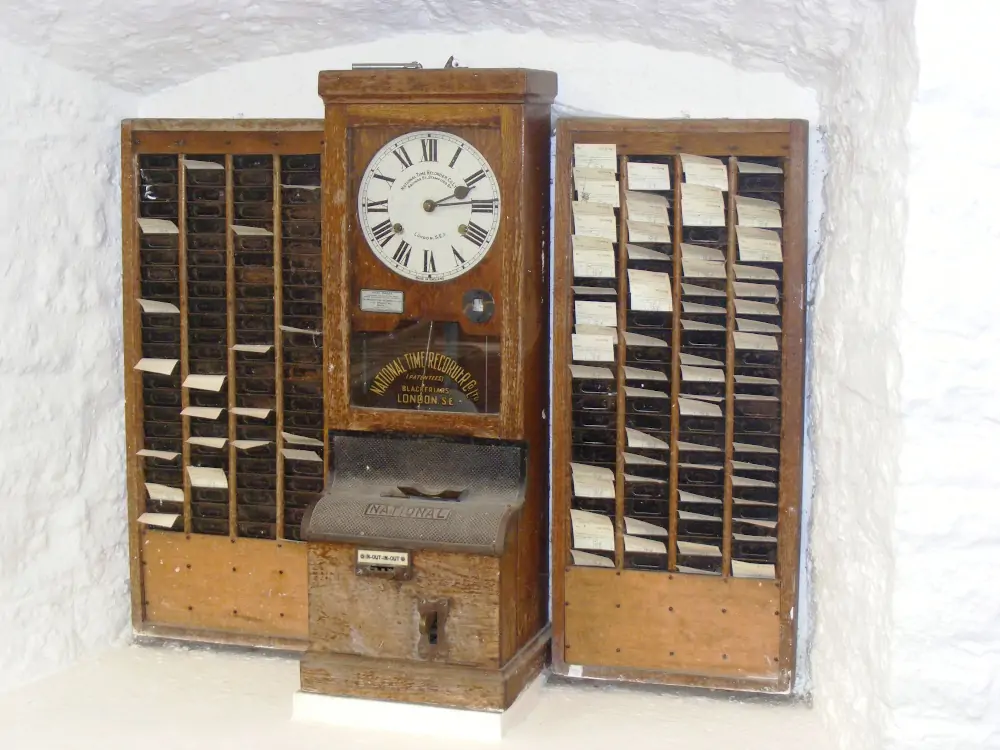Timesheets: A term many of us are familiar with, but have we ever stopped to truly appreciate their role? At their core, timesheets are detailed records of the hours an employee has worked, segmented often by specific tasks or projects. While they may seem straightforward, there’s more to them than just clocking in and out.
Their true purpose? To ensure that every hour of hard work gets acknowledged and rewarded. In the bustling world of business, timesheets stand as silent sentinels, ensuring transparency and accuracy in payroll. But their role isn’t just limited to that. For managers and business leaders, timesheets are invaluable tools for workforce management and efficient business operations. They offer insights into project progress, help allocate resources effectively, and even assist in predicting future trends.
So, whether you’re someone who fills them out weekly or a business owner who relies on them for operational insights, timesheets play a more crucial role than we often give them credit for. Let’s delve deeper into their world and uncover the many ways they bolster our work environment.

The concept of tracking time is not a modern invention. In fact, the roots of the timesheet can be traced back to the late 19th and early 20th centuries. During this industrial age, businesses sought more efficient ways to monitor and manage their workforce.
The solution? The time clock. Introduced by Willard Bundy, an American jeweler, in 1888, this machine allowed employees to record their arrival and departure times with a simple punch card system. This development was transformative, providing businesses with an accurate method to track working hours, ensuring employees were compensated correctly.
An interesting development to note is that Bundy’s innovation did not remain a standalone venture. His manufacturing company eventually became part of a larger conglomerate that many will recognize today as IBM.
As industries diversified and the nature of work shifted, so did the tools used to track time. The rudimentary punch cards gradually evolved into written logs, spreadsheets, and eventually, the digital software systems that are ubiquitous today. One of the early industries to recognize the significance of detailed time tracking were law firms and consultancies. Given the nature of their services, accurate time logs were indispensable for billing clients and maintaining transparency.
This journey from punch cards to digital platforms illustrates the adaptability and continued relevance of timesheets in various business contexts over the years.

Bundy clock
Basic Concepts of Timesheets: Types and Tiers
At its core, a timesheet is a record-keeping tool that documents the amount of time an individual has worked, typically used for payroll or to track the progress of a particular task or project. But just as no two jobs are alike, timesheets have diversified to cater to the varying needs of industries and roles. Let’s delve into the basic concepts and the different types of timesheets based on the period they cover and the information they require:
- Daily Timesheets: As the name suggests, these focus on a single workday. They provide a granular view of tasks and activities, making them ideal for jobs that require detailed task tracking, such as consulting or freelancing.
- Weekly Timesheets: Popular in many businesses, weekly timesheets offer a balance between granularity and convenience. They give a snapshot of an employee’s workweek, helping managers gauge productivity and ensure consistent work hours.
- Bi-Weekly Timesheets: Especially common in organizations with bi-weekly payroll cycles, these timesheets cover a two-week period. They streamline the process of payroll calculations and reduce paperwork.
- Monthly Timesheets: Suited for roles with consistent daily tasks or salaried positions, monthly timesheets offer a broader overview of an employee’s work pattern over an extended period.
In addition to the time frame, timesheets can vary based on the information they capture:
- Simple Timesheets: These typically record start and end times for each workday. They’re straightforward and best suited for roles where the primary concern is the number of hours worked.
- Task-Based Timesheets: More detailed, these not only track hours but also specify which tasks or projects those hours were allocated to. Professionals in project management, law, or consulting might find these particularly useful.
- Categorized Timesheets: For businesses that need to track time spent on different types of activities (e.g., client meetings, administrative tasks, research), these timesheets allow hours to be categorized accordingly.
Understanding the basic concepts and types of timesheets is foundational for anyone navigating the world of work, whether you’re an employer aiming for operational efficiency or an employee looking to ensure accurate compensation.
Practical Applications of Timesheets: Beyond Just Clocking In
The timesheet, while often perceived as a simple administrative tool, plays a multi-faceted role in many aspects of business operations. Its practical applications span a breadth of areas, each crucial for organizational efficiency and transparency. Let’s explore some of the primary uses and benefits:
- Payroll Accuracy: Perhaps the most apparent application, timesheets ensure that employees are compensated correctly for their work. By accurately logging hours, discrepancies in pay are minimized, leading to a satisfied workforce and fewer payroll disputes.
- Project Management: Timesheets provide project managers with insights into how much time is being spent on specific tasks or phases of a project. This allows for better resource allocation, timeline adjustments, and ultimately, more successful project outcomes.
- Budgeting and Forecasting: By analyzing historical timesheet data, companies can predict future workload and allocate budgets more efficiently. Whether it’s forecasting staffing needs or estimating project costs, timesheets offer invaluable data for informed decision-making.
- Performance Evaluation: Regular timesheet submissions can aid in assessing employee performance. Are certain tasks taking longer than anticipated? Is there a pattern of overtime? Such insights can guide training efforts, workflow adjustments, or even hiring decisions.
- Client Billing: Especially pertinent in service-based industries like law firms, consultancies, and design agencies, timesheets ensure that clients are billed accurately for the hours dedicated to their projects. This transparency fosters trust and strengthens client relationships.
- Regulatory Compliance: In certain industries and regions, adhering to labor laws regarding work hours, overtime, and breaks is crucial. Timesheets serve as a documentation tool, ensuring that businesses remain compliant and avoid potential legal complications.
The practicality of timesheets extends far beyond mere time tracking. They serve as a linchpin in various facets of business operations, ensuring accuracy, transparency, and efficiency at every turn.

Timesheets vs. Timecards: What’s the Difference?
In the world of work, terminology can sometimes be tricky. Two terms that often get interchanged, or even mistaken for one another, are “timesheet” and “timecard.” While they both center around tracking time, they are distinct tools with different levels of detail and application.
A timecard, in its traditional sense, is a basic record of an employee’s start and end times. Originating from the era of punch clocks, it served one primary function: to determine the total number of hours an employee worked during a specific period, often a day or a week. Think of it as a log of an employee’s ‘clock-in’ and ‘clock-out’ times—straightforward and efficient for its intended purpose.
On the other hand, a timesheet is a more comprehensive tool. It doesn’t just record when an employee starts and ends their workday but can also detail how that workday was spent. Here are some areas where a timesheet provides a deeper dive:
- Task or Project Breakdown: Timesheets can track the amount of time spent on individual tasks or projects. This granularity helps in assessing productivity, project budgeting, and ensuring tasks are completed within their allotted times.
- Categorization: Whether it’s administrative tasks, client meetings, research, or actual project work, timesheets often allow users to categorize their time, providing a clearer picture of work distribution.
- Additional Information: Modern timesheets might include fields for comments, codes, or even expenses related to specific tasks. Such details can offer context, clarify ambiguities, and keep everyone in the loop.
- Flexibility: Timesheets can adapt to various timeframes, be it daily, weekly, or monthly, and cater to the diverse needs of different industries or roles.
In essence, while both timesheets and timecards aim to record work hours, timesheets go a step further, offering a more nuanced view of how those hours are utilized. They cater to the evolving complexities of modern work environments, whereas timecards represent a simpler, albeit still relevant, method of time tracking.
Myths and Realities of Timesheet Tracking
As with many tools in the professional realm, timesheets come with their fair share of myths and misconceptions. Clearing the air around these can help both employers and employees utilize timesheets to their full potential. Here are some common misunderstandings:
- Just for Hourly Workers: A prevalent myth is that timesheets are exclusively for hourly employees. In reality, salaried professionals, freelancers, and contractors can benefit from tracking their time, whether for project management, self-assessment, or client billing.
- Only About Attendance: While timesheets do record work hours, they’re not just glorified attendance records. Modern timesheets capture the nuances of a workday, from task breakdowns to time spent on different project stages.
- Tedious and Time-Consuming: Some believe that filling out timesheets is a lengthy process that disrupts workflow. However, with today’s advanced time-tracking software, logging hours can be quick, intuitive, and even automated.
- They’re Infallible: Relying solely on timesheets for employee evaluation can be misleading. Timesheets offer quantitative data, but they don’t always reflect the quality of work or the challenges faced during specific tasks.
- A Tool for Micromanagement: Some employees might view timesheets with suspicion, seeing them as a way for managers to excessively monitor every minute of their day. In truth, timesheets are more about operational efficiency, accurate billing, and resource allocation than micromanagement.
- One Size Fits All: Not every business or industry will benefit from the same type of timesheet. The idea that there’s a universal format is mistaken. Customization based on specific needs is often essential for optimal results.
Addressing these misconceptions can pave the way for a more informed, efficient, and positive approach to time tracking in various professional settings.
Picking Your Timesheet Tool: A Comparative Look

In the quest for effective time tracking, one is presented with a variety of tools, each with its own merits. Let’s delve into three prominent methods – paper timesheets, Excel, and Log My Hours – to discern which might best suit your needs.
- Paper Timesheets:
- What is it?: The classic method, a paper timesheet is a physical document where employees manually jot down their start and end times, and sometimes, specific tasks performed.
- Pros: Tangible and requiring no tech skills, they might be apt for small teams or those with limited digital access.
- Cons: Vulnerable to human error, potential damage or loss, and the time-intensive nature of processing and storage.
- Excel Timesheets:
- What is it?: Leveraging Microsoft Excel, this digital method involves creating templates where employees input their hours. With Excel’s formula capabilities, computations like total hours worked or overtime can be automated.
- Pros: A flexible approach allowing for custom templates and automated calculations. It offers a digital upgrade from paper and is accessible to most businesses.
- Cons: It may lack the intuitive features of dedicated time-tracking software. Formula errors can result in miscalculations, and managing timesheets for larger teams might become challenging.
- Log My Hours:
- What is it?: A specialized time-tracking software, Log My Hours is designed explicitly for logging work hours, offering features like analytics, reminders, and integrations with other business tools.
- Pros: With its user-centric design, many processes are automated, and it can be accessed across devices. Ideal for those seeking a holistic time tracking solution.
- Cons: There’s potentially a cost associated with this platform. Additionally, employees might need training to maximize its potential.
In summation, while paper timesheets bring simplicity, Excel grants versatility, and platforms like Log My Hours offer a comprehensive solution. By understanding each tool’s essence and weighing their pros and cons, you can adopt the method that aligns seamlessly with your organization’s demands.
The Future of Timesheets: A Glimpse Into Tomorrow’s Time Tracking
Timesheets, like many other tools in the professional world, are not static; they evolve to meet the changing demands of the workforce and advancements in technology. As we gaze into the future of time tracking, several trends and innovations come into view:
- Integration with Other Tools: The future of timesheets is interconnected. We can expect even more seamless integrations with other business tools—be it payroll systems, project management tools, or HR platforms—to ensure a holistic approach to workforce management.
- Artificial Intelligence and Automation: Manual entry might soon be a thing of the past. With AI-driven tools, timesheets could auto-populate based on user activity, ensuring accuracy and saving valuable time. Predictive analytics could also offer insights into workforce productivity and patterns.
- Biometric Time Tracking: Beyond just logging in with a username and password, biometric systems like facial recognition, fingerprint scanning, or even voice recognition could be employed to ensure authenticity and reduce discrepancies.
- Remote Work Adaptability: With the rise of remote work, timesheets of the future need to cater to decentralized teams. Features such as timezone adjustments, virtual check-ins, and collaborative tools could become standard.
- Enhanced User Experience: User-friendliness will remain paramount. The next generation of timesheets will likely prioritize intuitive design, ensuring users, regardless of their tech proficiency, can navigate and input data with ease.
- Increased Emphasis on Data Security: As timesheets become more integrated and digitized, ensuring the security and privacy of this data will be of utmost importance. Advanced encryption methods, regular security audits, and user-controlled privacy settings will be in the spotlight.
In essence, the timesheet of the future is not just a passive record-keeper but an active participant in enhancing workplace productivity, security, and adaptability. As technology continues its relentless march forward, time tracking tools will no doubt keep pace, becoming smarter, more intuitive, and increasingly indispensable.
Conclusion: The Timeless Value of Timesheets
In the ever-evolving landscape of business operations, one constant remains: the need to accurately track and manage time. From their historical roots as paper logs to the dynamic, AI-integrated tools of today, timesheets have continually adapted to meet the shifting demands of the workforce.
Our journey through the intricacies of timesheets underscores their significance, not merely as administrative tools, but as crucial assets in enhancing productivity, ensuring accuracy, and fostering growth. Whether you’re a small startup or a sprawling enterprise, the right timesheet solution can make all the difference.
As we’ve seen with XYZ Company, modern timesheet tools can profoundly influence a business’s trajectory, offering insights, streamlining processes, and cementing trust with clients.
In a world where time is often equated with money, understanding, and optimizing how it’s spent is invaluable. And as the future unfurls, with its promise of even more advanced time-tracking methodologies, one thing is clear: the humble timesheet, in whatever form it takes, will remain an indispensable ally in the quest for operational excellence.
Here’s to tracking, optimizing, and harnessing the power of every moment!





